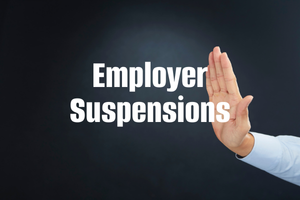Still Employed Claims
Handling still employed claims can sometimes be confusing. There are situations where these
types of claims should be protested and other times when they should not. Before responding to
these types of cases, ask yourself the following questions:
- What is the claimant’s status?
- Full time, part time, casual, on call, etc.
- Was the claimant hired under this status?
- Define the hours worked for that status (i.e. full time = 40 hours)
- How many hours is the claimant currently working?
- Do these hours vary?
- Check the wages, do they fluctuate?
- Is the claimant guaranteed a specific amount of hours per week?
- Has there been a time in the past that the claimant was laid off or had a reduction in hours even though he/she is currently a full time or part
time employee? - Has the claimant accepted all hours offered to him/her?
- If not, explain and possible pursue a job refusal
Regular Full or Part Time Employment
It is recommended that you protest a still working case when the claimant is working a set
schedule every week. This is known as working a regular full or part time schedule that does not
fluctuate. These types of employees could be working 40 hours every week or 20 hours every
week. As long as you can show that hours do not change based on the needs of the business,
these types of cases should be pursued. To prove this, you can provide copies of pay statements
that show the same amount of pay earned each week or time clock punches that show the
amount of hours worked.
Working All Available Hours
If you receive a claim for someone who works based on the needs of the business (meaning, a
claimant has a fluctuating schedule), it is recommended that those types of cases not be
pursued. For example, a claimant may work 20 hours one week, 15 the next week, 20 the
following week and so on. If the amount of hours worked frequently changes and the claimant is
accepting all available hours, partial unemployment may be awarded to supplement the
claimant’s income.
Unavailable for Work
There may also be times in which you receive an unemployment claim for someone who is still
employed, but not working all available hours. The claimant may be calling out a lot or giving
away scheduled shifts. Remember, in order for a claimant to qualify for unemployment benefits,
he/she has to be available for work. When faced with this type of situation, connect with a service team member through CaseBuilder. They will prepare a response to the state letting them know that the claimant is still employed, but has made him/herself unavailable for work.
Thank you to our partner, Equifax, for providing this content.


